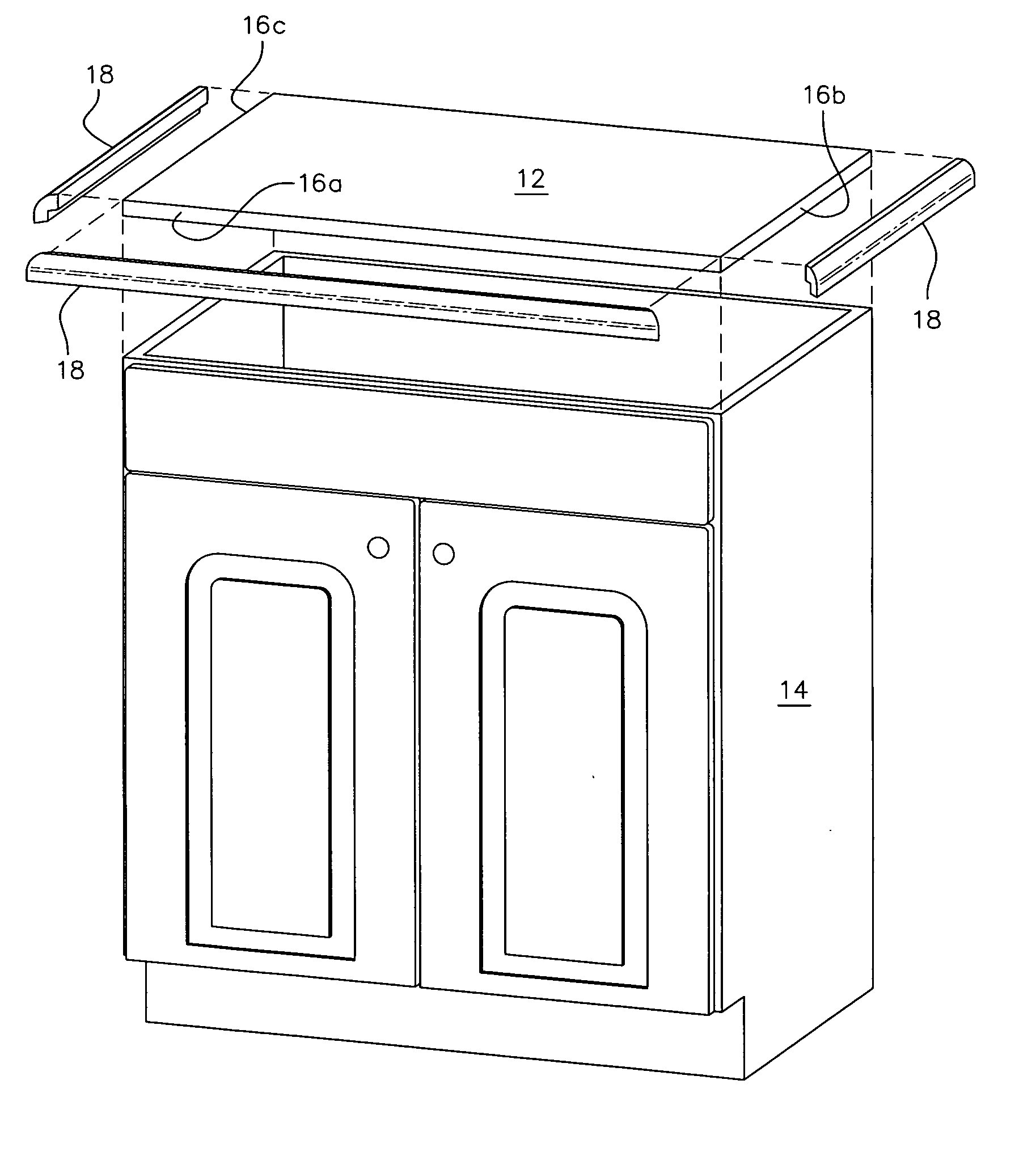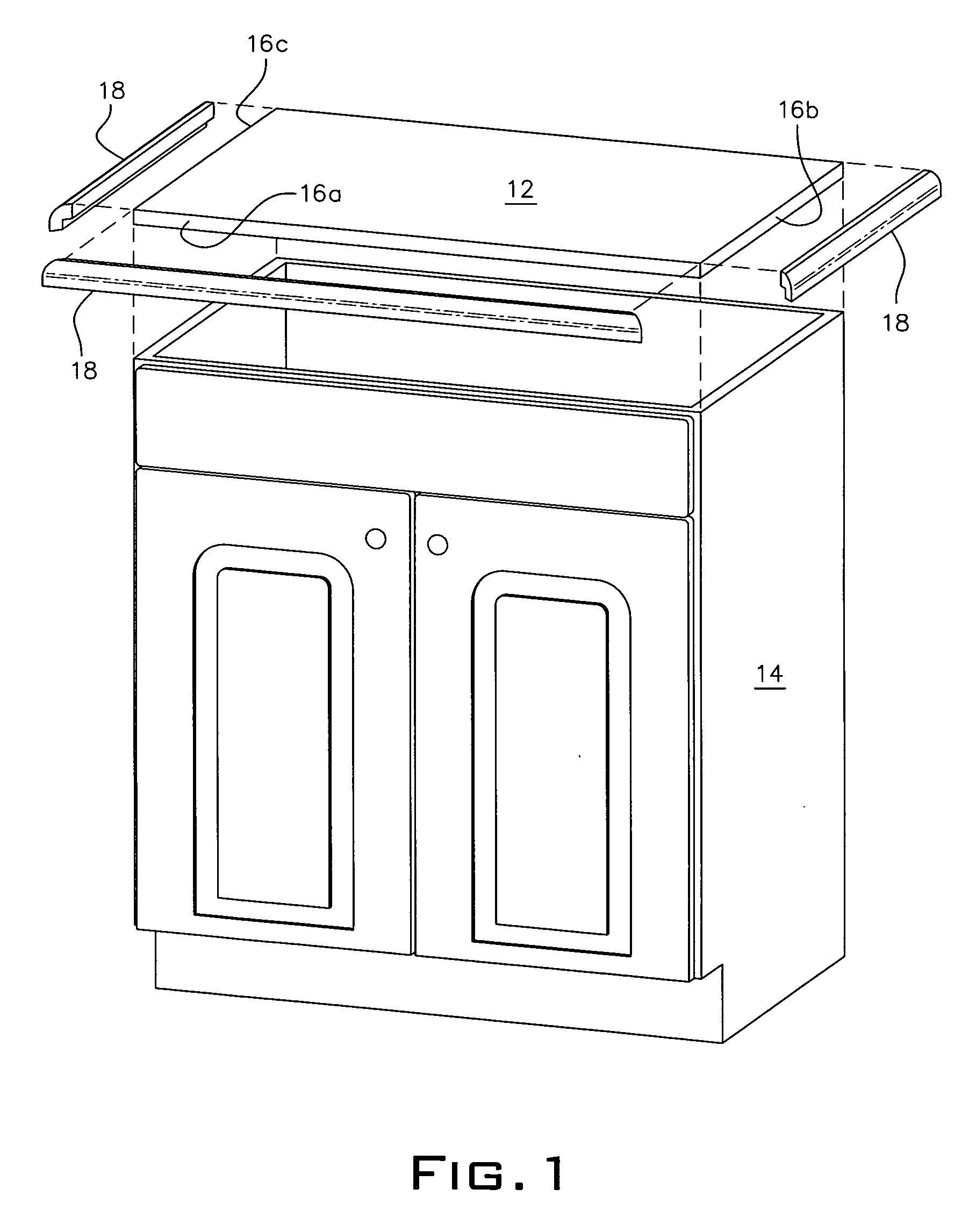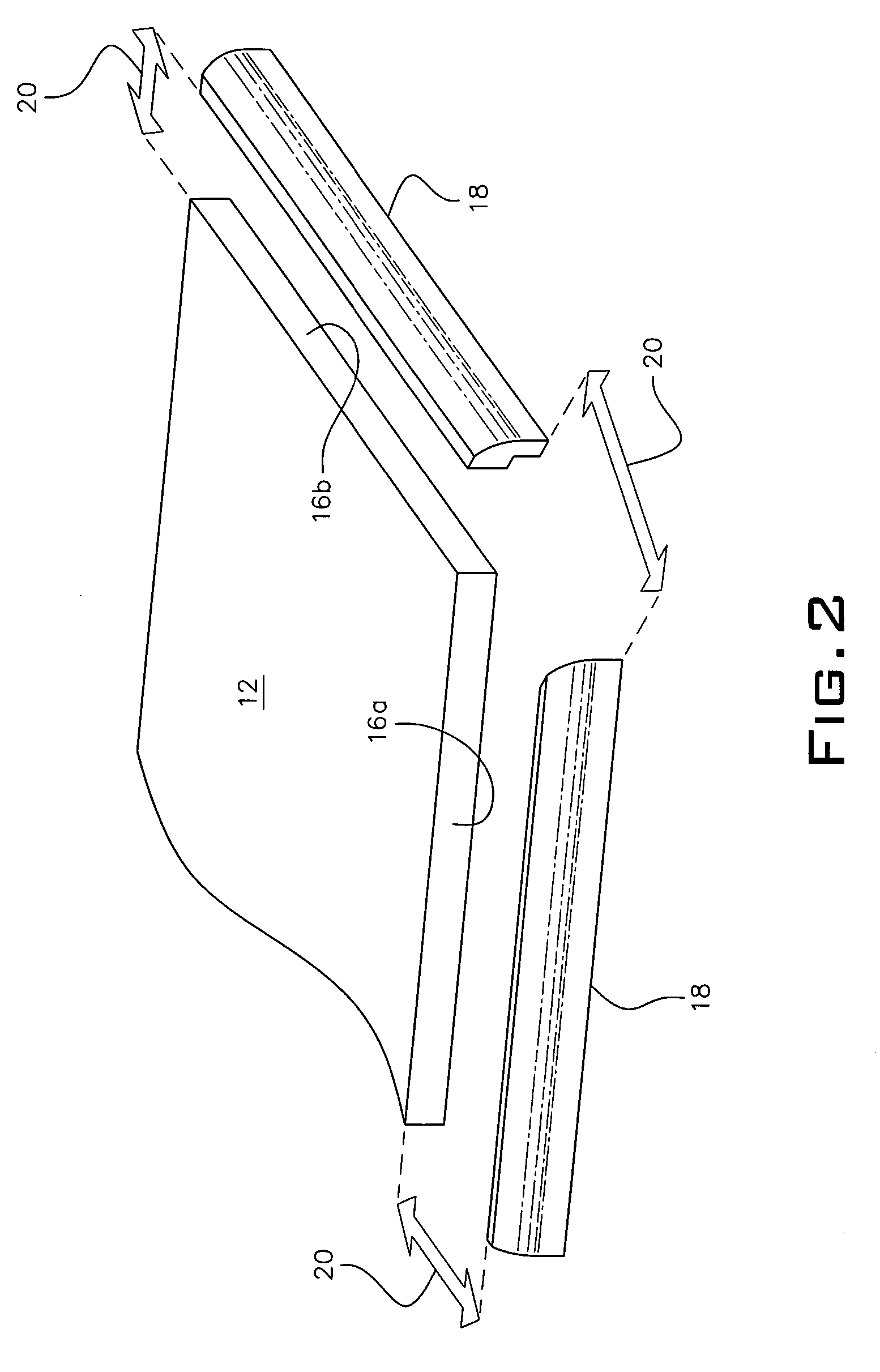[0016] As alluded to above, the present invention is a method that avoids the use of several steps typically associated with an industrial fabrication shop and the associated high cost with such operations and its inevitable
impact on the cost to the
consumer for installing such beautiful natural stone surfaces on countertops, table tops and cabinet tops. First, what is needed is material that can be handled and worked by installers at the
work site using simple wet saws or dry saws, typically
diamond bladed. What is needed is material that is thinner than that used presently in form of blanks and different sizes that will need only few touch up cuts.
[0018] Material can be quarried and produced worldwide according to predetermined specifications that will enable an installer to completely install the material without the need for a fabrication shop. The key is to obtain from quarries, a thinner material than what is currently be provided by worldwide quarries already cut to blancs. Because thinner material is required, most will already be cut to sizes easier to work with, thus avoiding waste and enabling the use of lower quality blocs, and the thinner material and different sizes of edges (2 cm to 15 cm) will be sent to distribution warehouses. Consumers and local contractors will be able to place orders through authorized and licensed sales representatives, department stores, show rooms, hardware stores, furniture stores, cabinet shops,
pool builders, tile stores, natural stone suppliers and distributors, and even garden stores. As one can surmise, the
distribution chain is more
consumer friendly because the thinner slabs are lighter and easier to
handle, can be stored and inventoried without the need for heavy
industrial equipment required to
handle the heavier thicker slabs and the obvious overall cost of material is also beneficial to the employee, and it could be even installed by the homeowner making it even more affordable.
[0021] The edge material can be applied to kitchen countertops, vanities, bar tops, office table, regular tables, pools, tubs,
stairs,
patio table tops and window sills. It will be added using a
colored resin to glue it together with a very thin joint. The edge could be any thickness and the thicker it is, it will look more customized and fine, like a very expensive work that will cost much less than what the installation of the
present day tops costs. In addition, other benefits are lots of different choices of edging thickness,
color mixing, different stone mixing, combination of different designs and more options for the designers and decorators. Of course, a thicker (or wider) edge when attached to the edge face of the natural stone surface, will make the surface appear to be significantly thicker than its actual thickness and its
resultant appearance will therefore seem to be worth much more than what it will actually cost the
consumer.
[0022] With the inventive method herein, the time reduction for fabrication and installation will be very significant, the high overhead of a fabrication shop will become unnecessary, the cost of
layout, transportation and warehousing will reduce considerably because the thinner slabs and sizes that would be imported. These products will now become more affordable because of the cost reduction and the demand will increase considerably due to the affordability, beauty and quality. Workers also benefit as there is increase work for workers of stones and tiles and other related areas. Even a homeowner will be able to install the natural stone top using an installation kit and instructions. These thinner tops could be installed on top of existing tops because the new edge will cover the old edge and its light weight (thinner slabs). The waste is reduced significantly because the blanks, sizes smaller than current slab sizes, will be made with desired standard measurements avoiding the rough edge and cuts at the shop. Of course, waste is reduced just from the use of thinner material.
[0024] Another contribution to the cost reduction noted in the example above is that in the new method, the cost of blocks can be reduced by about 60% because the traditional method requires first quality blocks while with the new method, lower quality blocks (second and third quality) will be used. The reason is that different size blanks can be produced instead of the full size slabs. In addition, the thinner cut slabs can be more readily converted to into tiles and sold while the 3 cm slabs would be very expensive to turn into thin tiles. Although 2 cm slabs could be turned into tiles, the full slabs still have to be top quality to be used in the process.
 Login to View More
Login to View More 


